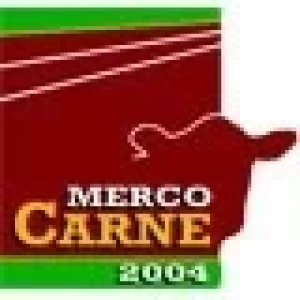COMO SER RENTABLES Y COMPETITIVOS<br><i>HOW TO BE PROFITABLE AND COMPETITIVE</i>

La mayoría de los productores vinculados con la actividad ganadera son conscientes de la importancia creciente del bienestar animal en el mercado internacional de la carne vacuna. Lo que se intenta difundir en esta entrega es la incidencia que adquiere el tema en términos de rentabilidad económica. En tal sentido, vale la pena ponderar un reciente estudio que llevó adelante la República del Uruguay y que Americarne expone en estas páginas. El objetivo central de la investigación realizada a través de la Facultad de Veterinaria fue mejorar la calidad de la carne para hacer que la industria ganadera de ese país resulte más competitiva. Se analizaron todos los eslabones de la cadena y los principales hallazgos se orientaron tanto a los procedimientos utilizados en el campo, el traslado de los animales y el trato previo a la matanza, como al impacto directo en la calidad de la res.El estudio resultó importante por varias cuestiones: en primer lugar, porque los uruguayos ahora pueden tener una visión global y completa de todo el proceso industrial, pero sobre todo porque la investigación trató de cuantificar tales observaciones en términos de dinero. La pérdida anual para la industria en Uruguay asciende, por lo menos, a 2 millones de dólares. Esta cifra refleja no sólo los kilos que se desperdician de la res, sino también otras mermas como el deterioro de la res, la reacción negativa por parte de los consumidores ante cortes poco sabrosos y los cambios en las propiedades organolépticas. En otras palabras, la cifra de 2 millones de dólares puede multiplicarse varias veces, ya que el estudio sobre producción de carne vacuna en tiempo real no habla de las inversiones que se requieren, sino del dinero que puede ahorrarse tan sólo por no maltratar a los animales. La experiencia realizada en Uruguay coincide con los hallazgos de otra investigación regional. Se trata de los estudios que realizó el Instituto Científico de la Carne de la Universidad Austral de Chile, a través de la Doctora Carmen Gallo. La científica pudo documentar el efecto que adquiere una adecuada capacitación de los trabajadores sobre la calidad de carne y como esto, en forma indirecta, proporciona rentabilidad sobre la inversión que requiere una capacitación sistemática.El hecho de que estos estudios existan y reflejen las diferentes realidades regionales son buenas noticias para la industria de la carne vacuna de América Latina. Esto significa que la industria puede acceder a técnicos y científicos que comprenden la realidad del sector y colaboran en el desarrollo de políticas y programas sustentables que generen, de manera sustentable mayor rentabilidad al negocio de la carne. n* Hanne Martine Stabursvik, veterinaria noruega que vive y trabaja en Argentina. Miembro del Colegio Real de Veterinarios del Reino Unido. Una de sus especializaciones son los controles veterinarios de productos de origen animal importados a Unión Europea. Dicta la materia Bienestar Animal en la Universidad del Salvador, Facultad de medicina veterinaria y trabaja con especialistas en el tema de todo el mundo. También es miembro de Red Alimentaria.Most of the producers in the cattle industry are aware of the importance of animal welfare in the meat international market. What we try to make known is the incidence this topic acquires in terms of economic profitability. In this regard, it is worth to consider a recent study carried out by the Republic of Uruguay and expounded by Americarne in these pages. The main goal of the research made through the School of Veterinarian was to improve the quality of the meat in order to make the cattle industry in that country more competitive. All the chain links were analyzed and the main findings were focused not only on the proceedings used in the field, the transportation of animals and the treatment given to them before slaughter, but also on the direct impact on the quality of the animal.This study proved to be important for several reasons: firstly, because Uruguayans can now have a global and complete vision of the whole industrial process, but above all, because the research tried to quantify those observations in terms of money. The annual loss for the industry in Uruguay goes up to, at least, 2 million dollars. This figure reflects not only the loss in kilograms of animal but also other losses such as the animal impairment, the negative reaction of consumers in view of not very tasty joints and the changes in the organoleptic attributes. In other words, the amount of 2 million dollars can be multiplied many times, since this study on meat production in real time does not consider the investment required, but the money that can be saved just for not giving maltreatment to animals. The experience carried out in Uruguay matches with the findings of another regional research. It consisted of studies conducted by the Instituto Científico de la Carne (Scientific Institute of the Meat) of the Universidad Austral de Chile, through Dr. Carmen Gallo. This scientist could document the effect caused by the adequate training of workers on the quality of the meat and how it indirectly provides profitability over the investment required by systematic training.The existence of these studies and the reflection of different regional realities are good news for the cattle industry in Latin America. It means that the industry can have access to technicians and scientists who understand the reality of the sector and contribute to the development of sustainable policies and programs which generate, in a sustainable way, more profitability for the meat business. n* Hanne Martine Stabursvik, Norwegian veterinary surgeon living and working in Argentina. Member of the Royal College of Veterinary Surgeons, UK. One of her specialties is the veterinary checks on imported products of animal origin in the EU. She teaches animal welfare at the Universidad del Salvador, Facultad de Medicina Veterinaria and works with specialists in the field from all over the world. She is also a member of Red Alimentaria.





